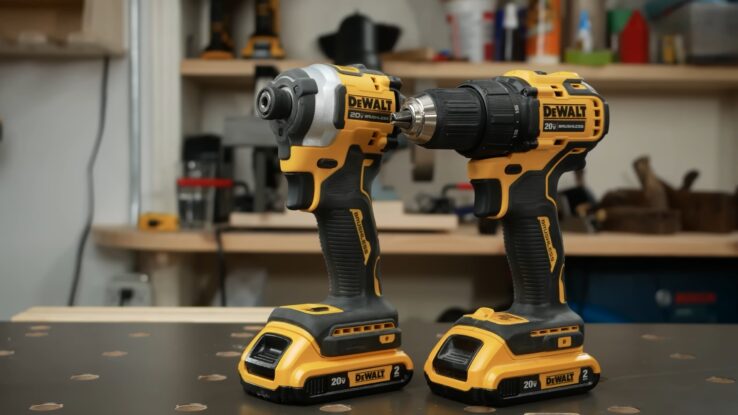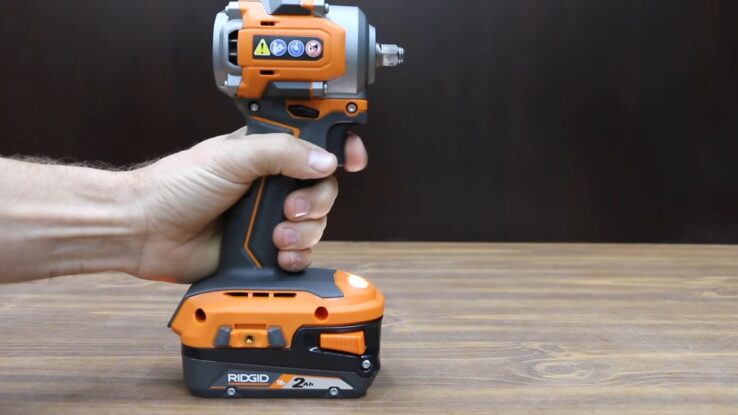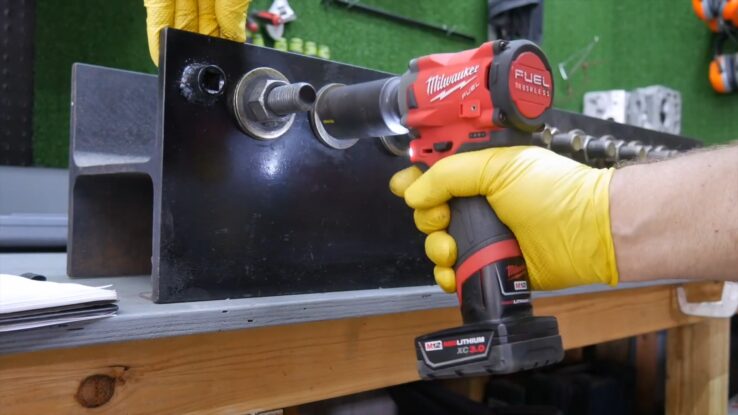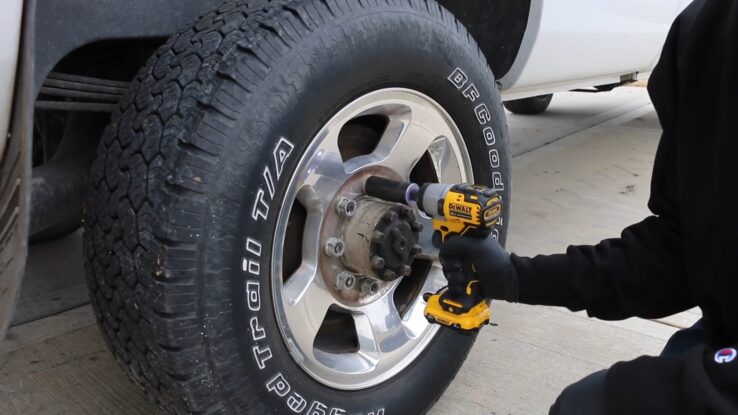In the world of power tools, understanding the differences between similar tools can be crucial for efficiency and safety. Two such tools that often get confused are the impact driver and the impact wrench.
While they might seem similar at first glance, they serve distinct purposes and have unique features tailored to specific tasks. This article will provide a comprehensive comparison between the two, highlighting their design, mechanisms, applications, and more.
Whether you’re a professional tradesperson or a DIY enthusiast, knowing when to use which tool can make all the difference in your work.
Table of Contents
Impact Driver
An impact driver is a specialized power tool designed primarily for driving screws with efficiency and ease. Let’s delve deeper into its features and benefits:
Design and Mechanism

At its core, an impact driver uses a high-speed impact mechanism that delivers a series of rapid blows, providing a surge of torque. This mechanism distinguishes it from traditional drills and allows it to drive screws even into the most resistant materials without stripping the screw head.
Collet and Bit Compatibility
The tool is equipped with a 1/4-inch hex collet, which is specifically designed to accept 1/4-inch hex shank bits. This design ensures a firm grip on the bit, reducing the chances of it slipping during operation.
Versatility
While wood is the most common material it’s used on, the impact driver’s prowess isn’t limited to just that. It can efficiently drive screws into metals, plastics, and even some masonry, given the right bit.
Torque and Efficiency

One of the standout features of an impact driver is its high torque. This means it can generate a significant amount of rotational force, making it particularly effective for driving screws into tough materials where other tools might struggle.
User-Friendly
Impact drivers are generally compact and lightweight. Their ergonomic design ensures that they’re comfortable to hold, reducing user fatigue during prolonged use. The tool’s simplicity also means there’s a shorter learning curve, even for beginners.
Impact Wrench
An impact wrench, sometimes referred to as a torque gun, is a powerful tool primarily used for tightening or loosening nuts and bolts. Here’s a closer look:
Design and Mechanism

Like the impact driver, the impact wrench also uses a rapid impact mechanism. However, it’s designed to deliver a much higher torque, making it a powerhouse for heavy-duty tasks.
Drive and Socket Compatibility
Impact wrenches come with a square drive, typically in sizes like 1/2-inch or 3/8-inch, designed to accept corresponding sockets. This allows users to work with a variety of bolt sizes, making the tool versatile across different tasks.
Primary Applications
The tool’s primary domain is the automotive industry, where it’s used for tasks like removing lug nuts from tires. However, its applications aren’t limited to just that. In construction, maintenance, and other heavy-duty scenarios, the impact wrench proves invaluable.
Torque Capabilities

The torque output of impact wrenches far surpasses that of impact drivers. This makes them the go-to tool for dealing with stubborn nuts and bolts that have rusted or become jammed over time.
Power Over Precision
While impact wrenches pack a punch, they’re more about power than precision. They’re bulkier than impact drivers and are designed for tasks that require brute force rather than finesse.
Choosing the Right Tool
So, which tool is right for you? It depends on the task at hand. If you need to drive screws into wood, an impact driver is a good choice. If you need to loosen or tighten nuts and bolts, an impact wrench is a better option.
If you are not sure which tool to use, it is always best to err on the side of caution and use a tool that is more powerful than you think you need. This will help to prevent you from damaging the fastener or the material you are working with.
Here is a table that summarizes the key differences between impact drivers and impact wrenches:
| Feature | Impact Driver | Impact Wrench |
| Drive style | 1/4-inch hex collet | Square drive |
| Torque | Less | More |
| Speed | Faster | Slower |
| Weight | Lighter | Heavier |
| Applications | Driving screws, light-duty automotive work | Loosening or tightening nuts and bolts, heavy-duty automotive work |
When Not to Use an Impact Wrench

Impact wrenches, with their immense power and torque, are a boon for many heavy-duty tasks. However, this very power can be a double-edged sword if not used judiciously. Here are some situations where the use of an impact wrench might not be appropriate:
- Cross-Threaded Nuts and Bolts: If a nut or bolt is cross-threaded, meaning the threads are not aligned properly, using an impact wrench can exacerbate the misalignment. The high torque can strip the threads entirely, making the fastener unusable and potentially damaging the materials it’s attached to.
- Already Tightened Fasteners: If a nut or bolt is already tightened to its maximum torque specification, using an impact wrench can over-torque the fastener. Over-torquing can lead to the fastener breaking or the material it’s fastened to becoming damaged. Always ensure you’re aware of the torque specifications for any fastener you’re working with.
- Delicate or Precision Tasks: Impact wrenches are designed for power, not precision. For tasks that require a delicate touch or precise torque, such as assembling delicate machinery or electronics, an impact wrench is not the right tool. Over-tightening can damage components or warp materials.
- Old or Rusty Fasteners: Old, rusty, or corroded fasteners can be brittle. The sudden and powerful torque from an impact wrench can cause these fasteners to snap or break, making removal even more challenging.
- Plastic or Brittle Materials: If you’re working with materials that are brittle or not as durable as metal, such as certain plastics, the force from an impact wrench can crack or damage the material.
Additional Tips
Size of Fasteners
Always match the tool to the size of the fastener. While impact drivers are great for smaller tasks, impact wrenches are designed for larger, heavy-duty fasteners.
Using an impact wrench on a small fastener can easily strip or break it.
Type of Work
The nature of your task should dictate your tool choice. Automotive and industrial tasks often require the power of an impact wrench.
However, for tasks like assembling furniture or general carpentry, an impact driver is more appropriate.
Budget Considerations
Impact wrenches, especially high-quality ones, can be more expensive than impact drivers. It’s essential to balance your need for power with your budget.
However, investing in a good tool can save money in the long run by reducing the chances of damaged materials or fasteners.
Research Before Buying
Before purchasing any tool, it’s always a good idea to read reviews and perhaps even test a few models. This ensures you get a tool that’s reliable, durable, and suitable for your needs.
FAQ
How do I decide which tool to use based on the task?
If you’re working with fasteners that require a driver bit, such as slotted, Phillips, square, or Torx, an impact driver is the right choice. For hex head fasteners like nuts, bolts, or timber screws, you should use an impact wrench.
Are there significant differences in power between the two tools?
Generally, impact wrenches offer more torque (power) than impact drivers. However, some high-end impact drivers might provide more power than compact impact wrenches. It’s essential to note that impact drivers usually measure their power in inch-pounds (in-lbs), while impact wrenches use foot pounds (ft-lbs).
What about the speed of these tools?
Impact drivers typically have higher speeds, with the best models reaching up to 3600 RPM or more. In contrast, a good cordless impact wrench might have speeds under 2000 RPM. Pneumatic impact wrenches can achieve even higher speeds, with some models reaching 8,000 RPM.
Which tool is more compact?
Impact drivers are generally more compact and lighter than cordless impact wrenches from the same manufacturer. However, pneumatic impact wrenches can be lighter.
Final Words
Choosing between an impact driver and an impact wrench boils down to the specific requirements of your task. While both tools offer impressive torque and efficiency, their applications differ significantly.
An impact driver is ideal for tasks that require precision and finesse, such as driving screws into wood or light-duty automotive work. On the other hand, an impact wrench, with its immense power, is the go-to tool for heavy-duty tasks like loosening stubborn nuts and bolts.
It’s essential to use the right tool for the job to ensure the safety, efficiency, and longevity of both the tool and the materials you’re working with. Always remember to consult the manufacturer’s guidelines and consider the nature of your task before choosing your tool.
